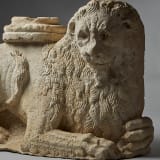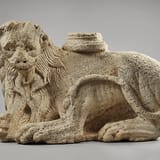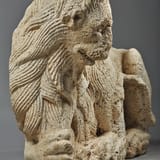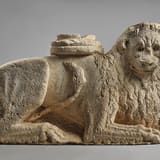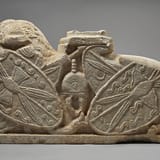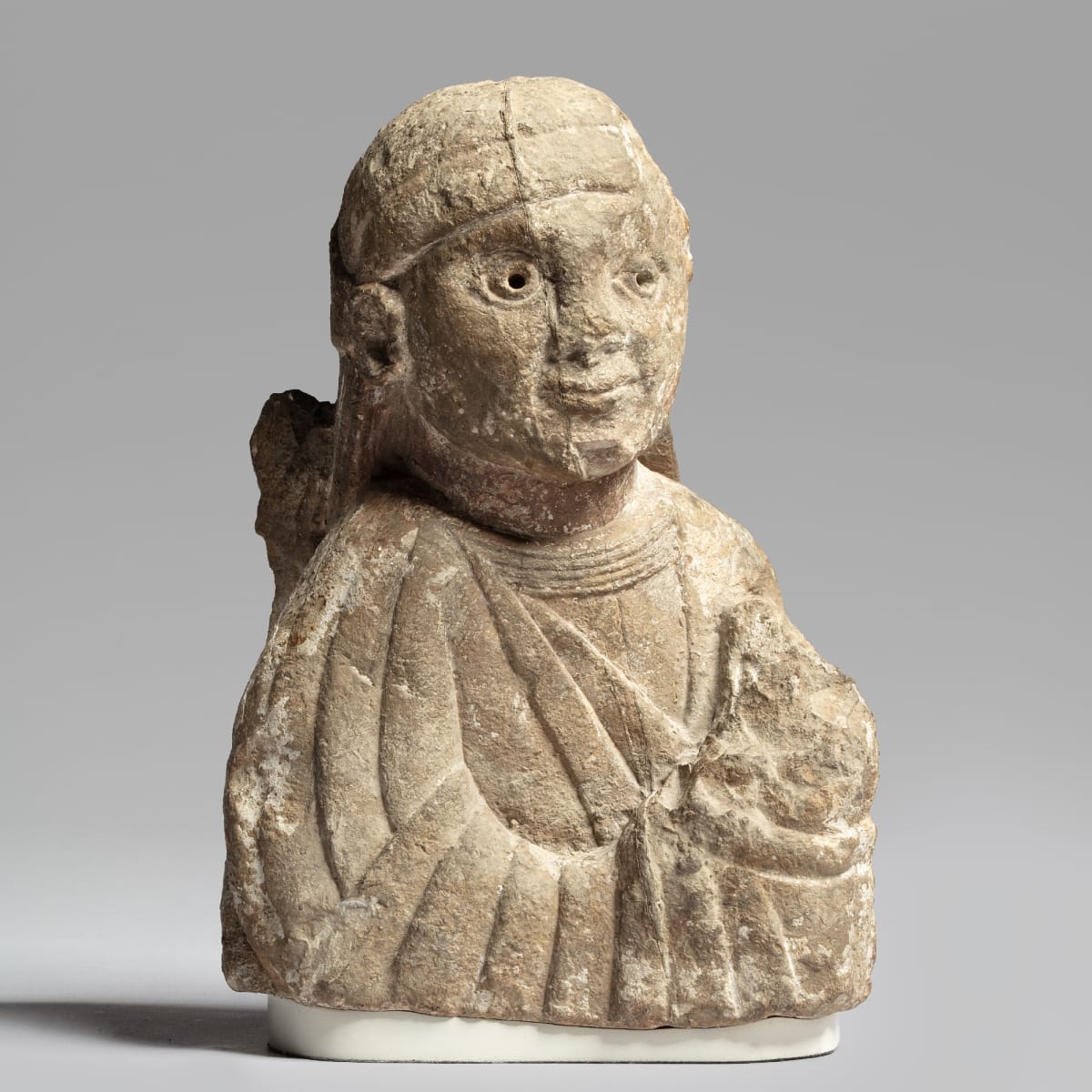




Two monumental lions with a 2nd century Roman carving on reverse
c. 1200-1250
Central Italy
58 x 92 x 30 cm (lion with carving on reverse); 60 x 85 x 29 cm (second lion); metamorphic limestone.
These two monumental stylobate lions are carved in a recumbent pose, their backs supporting bases that would have originally carried columns. Lions, without doubt the most widely depicted animals in Romanesque sculpture, were drawn from a broad spectrum of liturgical, textual, and visual sources. The menacing lions framing a large number of church portals were intended to banish the evil influences from the church.
Provenance
Private collection, Montegiorgio, Ascoli Piceno, Italy, by 1902;
Filomeni collection, Ascoli Piceno;
Stefano Faenza collection, Ascoli Piceno, acquired from the above in 2003
